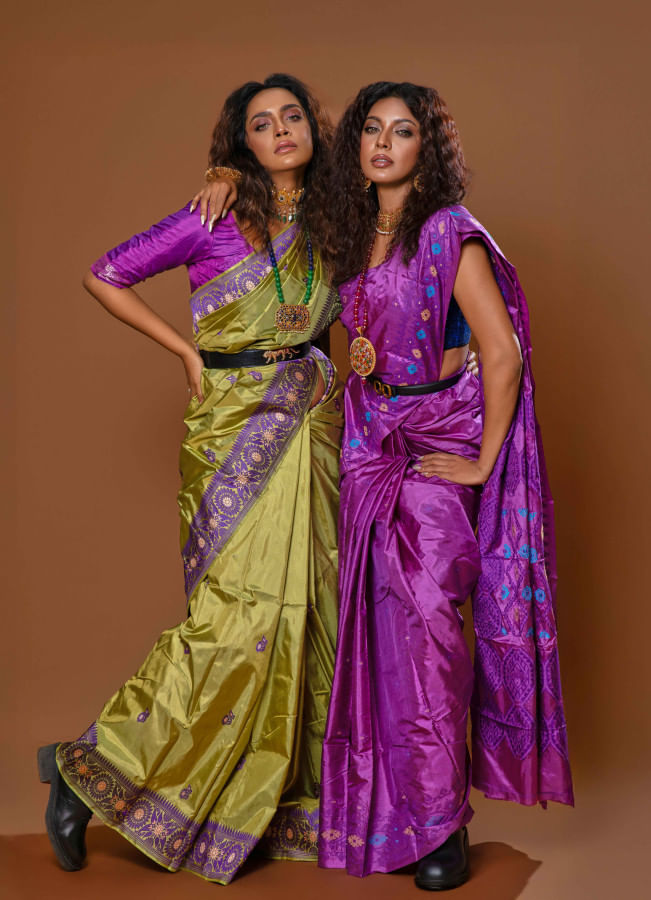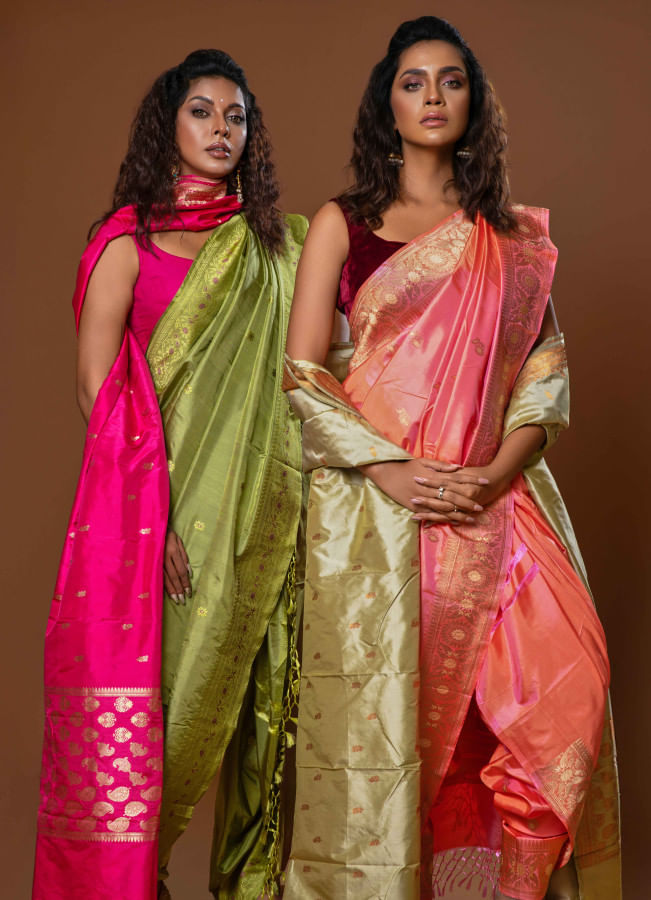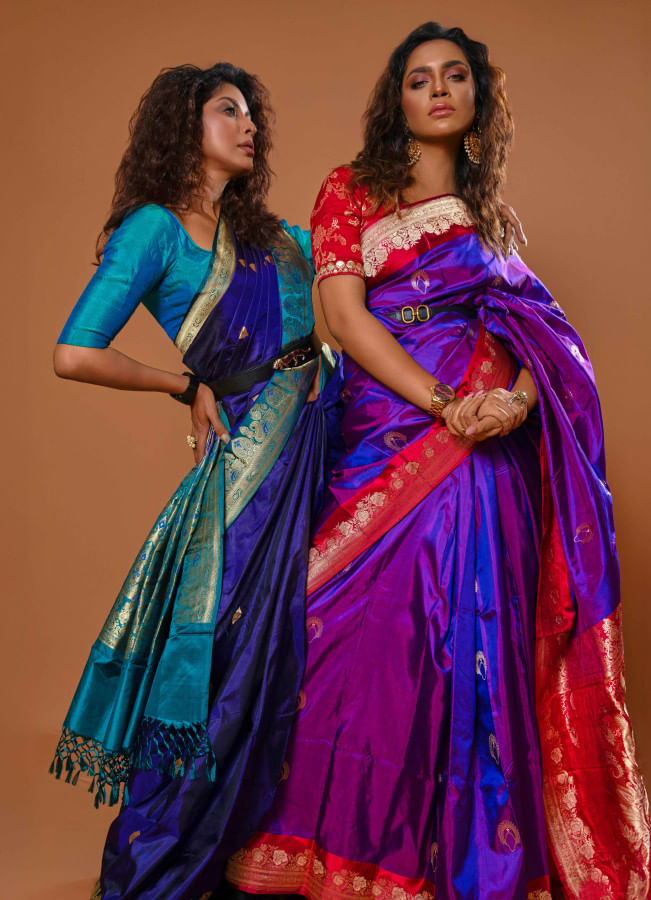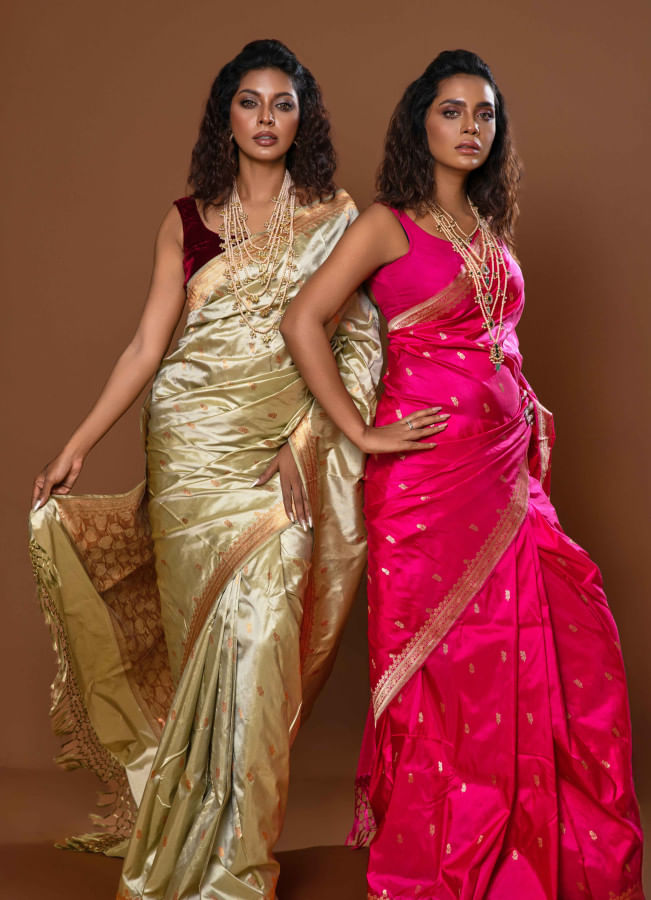Forever silk: Reinventing a classic for every generation

For Bangladesh, the saree has always been a symbol of grace, tradition, and identity. Among the countless weaves that shape the region's sartorial story, Rajshahi silk has stood out for centuries. Known for its rich sheen, intricate motifs, and luxurious drape, it has long been the centrepiece of weddings, Eid festivities, and Puja celebrations.
In its folds lies heritage, yet its enduring allure proves that silk is never stuck in the past. It evolves, adapts, and continues to hold relevance in wardrobes across generations.
The charm of silk sarees lies in their ability to create impact without trying. A single drape can transform your posture, heighten elegance, and command attention in a room full of people. Perhaps that is why these pieces have always been reserved for special occasions — when one seeks not just to dress, but to mark a moment.
Their sheen catches light differently during the day than it does at night, making them equally suited for all times of the day. An heirloom that may have once been worn by a mother at her wedding can just as seamlessly appear decades later on her daughter, styled in a way that feels fresh and timeless.

Modern fashion, however, has given the silk saree a different kind of edge.
No longer confined to a singular way of draping, today they are a canvas of experimentation. Belts cinching the waist have become a striking way to redefine its silhouette, adding structure to what was once fluid. Wide leather belts lend a bold, contemporary flair, while embroidered fabric ties keep the traditional spirit alive with a twist.
Drapes, too, have evolved; some prefer the neat, cascading pleats of classic Bengali style, while others let a longer part flow freely over one shoulder like a cape, or even loop it around the arms for drama.
Each method tells a different story, proving that a saree doesn't have to look the same twice.

Blouses, once uniform in their cut, have now become a playground of possibilities. The contrast blouse remains a favourite; however, it shares the stage with cropped jackets that lend sharpness or capes that transform the look entirely. Sequined corset-inspired blouses, high-neck embroidered tops, or even structured shirts have been paired with silks to push boundaries further.
Colour, too, is central to the conversation. Traditional palettes of red and gold remain eternal, but jewel tones now dominate festive wardrobes — emerald, sapphire, and ruby that gleam with intensity.
A striking combination of green and violet silk plays with complementary contrast, while vibrant magentas and cobalt blues shimmer with unapologetic glamour.
These hues are not chosen merely for aesthetic pleasure; they speak to confidence, to the spirit of celebration, to the very essence of festivals that embrace light, sound, and life. Modern styling also makes way for softer palettes — powder blues, pastel pinks, or muted golds — that bring daytime freshness to a fabric otherwise associated with grandeur.
Accessories are like adding punctuation marks to the story we tell in our outfits. Tones of gold remain a forever companion, its warmth echoing against silk's sheen. Pearls bring restraint and refinement, while gemstones introduce playfulness.
Chunky handcrafted jewellery has found its place alongside silks, often layered over bold colours to create maximalist statements. Yet, even minimal styling — just a belt, a sleek watch, and bold earrings — can make the same impact, letting the saree's fabric command the spotlight.

In recent years, the fusion of traditional drapes with contemporary footwear has become a statement in itself. Boots peeking from beneath jewel-toned pleats break stereotypes while grounding the saree in a modern world. What once may have seemed like a rebellious styling choice now feels like a natural extension of fashion's ever-shifting language.
However, the most compelling thing about silk is its timelessness. A grandmother may drape her Rajshahi silk with practised ease, each pleat an echo of her youth, while her granddaughter may wear the same saree cinched with a metallic belt and paired with a structured blouse. Both interpretations are valid, both beautiful, and both representative of the same heritage. This intergenerational adaptability is why silk sarees endure.
In a world dominated by fleeting fashion cycles and fast-changing trends, the Rajshahi silk remains unshaken. It is as relevant in a curated fashion editorial as it is in the intimacy of a family wardrobe. It can be worn by someone twenty or seventy, in the heart of the capital or halfway across the globe, and it will always exude the same quiet authority.
And, perhaps that is the secret to its undeniable pull. Whether draped traditionally, belted boldly, or paired with experimental blouses, silk sarees continue to live on as timeless canvases of individuality. They remind us that some garments do not need to be reinvented to survive; they simply shine brighter when allowed to evolve.
Photo: Adnan Rahman
Model: Mysha, Arnira
Wardrobe: Tangail Saree Kutir
Styling & Fashion Direction: Sonia Yeasmin Isha
Makeup: Sumon Rahat
Hairstyle: Probina

 For all latest news, follow The Daily Star's Google News channel.
For all latest news, follow The Daily Star's Google News channel. 








Comments